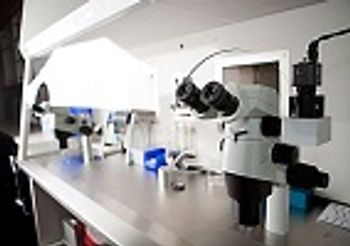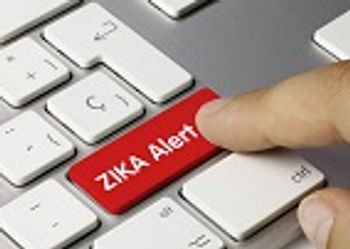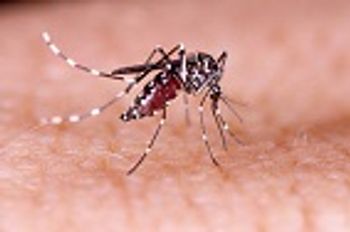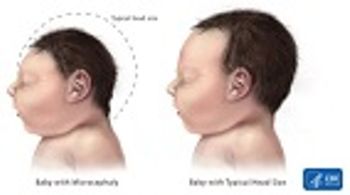
Just when residents in the Miami area thought the need to fear mosquito-borne viruses was over, Florida health officials revealed that they have identified a locally-transmitted case of Dengue virus.

Just when residents in the Miami area thought the need to fear mosquito-borne viruses was over, Florida health officials revealed that they have identified a locally-transmitted case of Dengue virus.

Pedro Fernando da Costa Vasconcelos, MD, PhD, director of WHO Collaborating Center for Arbovirus and Research, Evandro Chagas Institute, discusses the prognosis of babies with Zika-related complications.

Researchers at Stanford University School of Medicine have potentially added to existing knowledge with regard to how Zika virus affects the developing fetal brain.

Congressional leaders brokered a compromise Wednesday that keeps the government running, provides financial relief to the beleaguered city of Flint, Michigan, and finally funds Zika prevention efforts.

Babies born to mothers infected with the Zika during pregnancy may have the virus in their systems for more than 2 months after birth.

Despite the ongoing funding stalemate in Congress, several research initiatives hoping to yield an effective vaccine against Zika are advancing through the development process.

Pedro Fernando da Costa Vasconcelos, MD, PhD, director of WHO Collaborating Center for Arbovirus and Research, Evandro Chagas Institute, discusses whether or not all Zika-infected pregnant women will infect their fetuses.

After plaguing much of Brazil and the Caribbean since late 2014, the Zika virus “crisis”—such as it is—seems to have migrated eastward—far eastward.

Researchers at Central Michigan University have found that proteins in the saliva of Aedes aegypti mosquitoes bind to Dengue virus and inhibit disease transmission to human cells and mice.

Researchers are gathering more evidence of the exact effects of Zika virus infection on eye health.

Pedro Fernando da Costa Vasconcelos, MD, PhD, director of WHO Collaborating Center for Arbovirus and Research, Evandro Chagas Institute, discusses the likelihood that fetuses congenitally infected with the Zika virus will develop related complications, such as microcephaly.

John D'Angelo, MD, senior vice president, executive director Emergency Medicine Services at Northwell Health, discusses how hospitals use updates from the Department of Health to remain aware of any potential outbreaks.

With so much of the world focusing on Zika virus in the Americas and Southeast Asia, it’s easy to forget that there are other mosquito-borne viruses causing serious public health problems globally—namely, Dengue fever and Chikungunya.

Pedro Fernando da Costa Vasconcelos, MD, PhD, director of WHO Collaborating Center for Arbovirus and Research, Evandro Chagas Institute, discusses the possibility of the Zika virus evolving to cause other complications in the future.

With more than 90 locally transmitted cases of Zika virus infection confirmed in Florida, and states from the southeast to the Midwest fearing similar outbreaks, the Centers for Disease Control and Prevention (CDC) has made bolstering its network of approved testing laboratories for the virus a priority.

A Zika infection case in Utah has raised more questions about virus transmission.

Health officials in Singapore have reported a significant increase in the incidence of Zika virus infection in the country in recent weeks.

Pedro Fernando da Costa Vasconcelos, MD, PhD, director of WHO Collaborating Center for Arbovirus and Research, Evandro Chagas Institute, explains how Zika has evolved since the 1960s.

On the same day officials in Florida declared the Wynwood section of Miami, “ground zero” for the Zika virus in the state, no longer “active” for local transmission, officials from a state halfway across the country expressed concerns over a “pending disaster” involving the mosquito-borne infection.

A study comparing babies born with microcephaly and closely matched, but otherwise healthy, controls has confirmed a link between the birth defect and Zika virus.

The Centers for Disease Control and Prevention may revisit its travel guidance on south Florida as soon as early next week, if there are no new cases involving local transmission of the Zika virus in the region; however, local businesses continue to be impacted.

Using the mainstream media as the medium for their message, some of the nation’s leading physicians urged Congress to pass a “clean, bipartisan funding measure” to fight the spread of Zika, both in the United States and abroad, and to “protect pregnant women” from the complications associated with the virus.

Experts who predicted that West Nile virus would present Louisiana with its greatest infectious disease-related challenge in the aftermath of the horrific flooding in the state in August appear to have been correct.

Researchers at the University of Washington may have gained new insight into exactly how Zika virus infection damages the developing brain of the fetus in pregnant women.

Zika’s history as a “tropical” disease plays into the theory that global warming has played a role in the presence of virus-carrying Aedes Aegypti and Aedes Albopictus mosquitoes, and thus the disease itself, in heretofore “temperate” climates such as the southeastern United States.